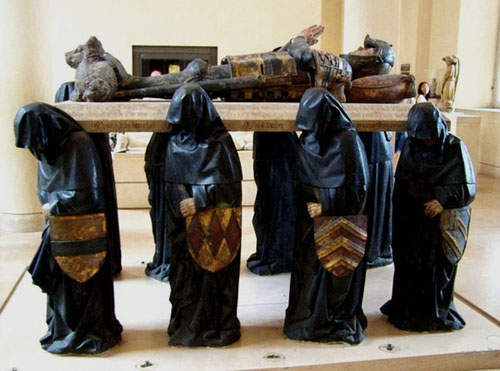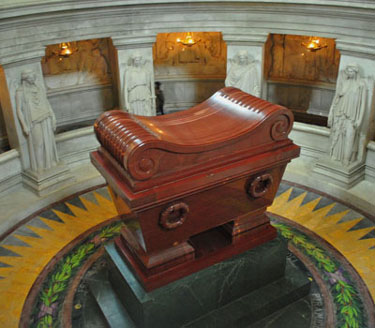Art & Architecture
 |
 |
 |
 |
 |
 |
 |
The Spirit of Faith and Laicism
in Funerary Art

In this impressive moment, the man manifests various states of soul: heroism, piety, serenity, resignation and sorrow. The ensemble is marked by faith. The warrior seems to be prepared to present himself before God with abundant military virtues, but begging forgiveness for his sins with humility and trust. One has the impression that he died peacefully and even with a noble joy. Heaven awaits him.
In contrast, those who remain mourn his departure. The separations caused by death are a painful test through which all must pass after original sin. The figures are bent, but not with despair. Despite their profound grief, they bear their heavy burden on their shoulders with resignation and composure. Thus does Christian resignation impart unflagging strength to soul. In the photo, we see no cross, no religious image; nonetheless, everything speaks of Religion.
In the second picture there is also no cross or religious image… yet nothing awakens a religious impression in our soul.

There is nothing that elevates our thoughts toward the idea of an afterlife that lies ahead for mortal man. Well-made, highly polished and geometrically proportional, the sepulchre has the faultless finish of a good ending. There is something in it that suggests a final period in a paragraph. The final period of the 19th century Caesar who was Napoleon. A final period in which nothing speaks to us of eternity and everything presents the implacable coldness of death.
In the background we discern some figures whose countenances could be those either of angels or pagan ‘geniuses’ who seem terrified and dismayed by the permanence of death. Their presence lends nothing of a Christian content to the ambience.
An era of faith and an era of laicism. The contrast of the times is depicted well in the contrast of the sepulchres.

Posted March 18, 2013
______________________
______________________



